FUNDING CUTS IMPACT CT HUMANITIES: Help CT Humanities navigate recent funding cuts and continue our vital work across Connecticut. All donations made to CTH will be matched dollar-for-dollar up to $50,000. Donate today!
News & Updates

Waterbury Clock Company Saved by Mickey Mouse – Who Knew?
The Ingersoll Waterbury Company (now Timex) was saved from bankruptcy during the Great Depression, in part, by the introduction of the Mickey Mouse watch.
Read
First New-Gate Prisoner – Today in History: December 22
On December 22, 1773, John Hinson, the state’s first inmate, arrived at New-Gate Prison.
Read
Jim Henson, the Muppets, and Greenwich
Between 1964 and 1971, the famous puppeteer and creator of Sesame Street, Jim Henson, lived in Greenwich and created many of his most recognizable characters.
Read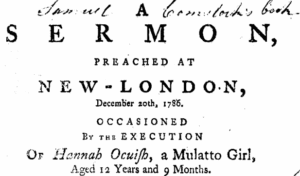
A Most Unusual Criminal Execution in New London
On December 20, 1786, a crowd gathered behind New London’s old meeting house to witness the execution of a convicted murderer.
Read
Chick Austin Modernizes a Connecticut Institution
Arthur Everett “Chick” Austin Jr., director of the Wadsworth Atheneum from 1927 to 1944, put Hartford on the cultural map.
Read
Waterbury’s Holy Land
Begun by Catholic activist John Greco in 1956, Holy Land USA fell victim to neglect and abandonment in the 1980s.
Read
Farmington Canal Designed to Give Connecticut Commerce a Competitive Edge
The Farmington Canal serves as an example of how developments in transportation played a pivotal role in facilitating the country’s industrial activity.
Read
Phillips’ Milk of Magnesia Originated in Stamford
In 1873, Charles H. Phillips patented Milk of Magnesia and his company produced the popular antacid and laxative in Stamford, Connecticut, until 1976.
Read
Thomas J. Dodd and the Gun Control Act of 1968
In 1963, Thomas J. Dodd crafted Senate Bill 1975, a “Bill to Regulate the Interstate Shipment of Firearms.”
Read
Eighty-Five Hundred Souls: the 1918-1919 Flu Epidemic in Connecticut
The state’s busy ports provided an easy point of entry for the disease that claimed millions of lives around the world.
Read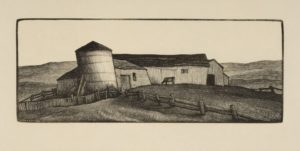
Thomas W. Nason, the Poet Engraver of New England
An artist best known for his wood engravings that accompany Robert Frost poems, Nason blended classic and modern styles to capture a vanishing rural landscape.
Read
Horace Wells Discovers Pain-free Dentistry
This Hartford dentist played key role in the development of anesthesia but competing claims to discovery obscured his accomplishment.
Read
An Inconvenient Season: Charlotte Cowles’s Letters from December 1839
Letters between a sister in Farmington and a brother in Hartford reveal details about daily life at a time when the distance between the two communities wasn’t so easily traveled.
Read
Elihu Burritt Born – Today in History: December 8
On December 8, 1810, Elihu Burritt was born in New Britain, Connecticut, to a farming family and became a leading pacifist of his time.
Read
Reporting News of Pearl Harbor – Today in History: December 7
On December 7, 1941, Mansfield resident and UConn history professor Andre Schenker took to the airwaves to report on the attack on Pearl Harbor.
Read
Beechmont Dairy: Bridgeport’s Ice Cream to Die For
Joseph Niedermeier Sr. founded the Beechmont Dairy in Bridgeport in 1906—a popular local business for over 60 years.
Read
Cromwell’s Iron Men Made Toys for Boys and Girls
The J & E Stevens Company eventually became the largest manufacturer of cast-iron toys in the country.
Read
NFL Great, Andy Robustelli of Stamford
Andy Robustelli played professional football for the Los Angeles Rams and New York Giants, winning several championships and awards during his career.
Read
The Slow Demise of Prohibition in Wilton
It is only in recent decades that the people of Wilton moved forward, albeit divisively, with plans to allow the sale of alcohol in their town.
Read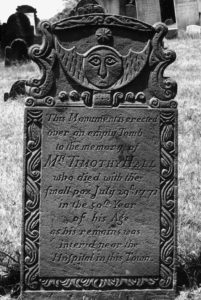
The Pest House Completed – Today in History: December 4
On December 4, 1760, the town of Durham announced the completion of their hospital house, precipitated by an outbreak of smallpox the year before.
Read
The American Brass Company: Leading the Way in the “Brass Valley”
The American Brass Company helped make the Naugatuck Valley a center of international brass production until the late 20th century.
Read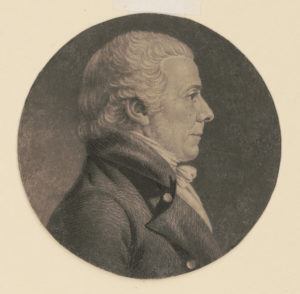
The Revolution of 1817
The Connecticut gubernatorial election of 1817 transferred power from the Federalists to the Republican Party, ending the Congregational Church’s domination.
Read
Scrabble Copyrighted – Today in History: December 1
On December 1, 1948, James Brunot of Newtown copyrighted the famous spelling game Scrabble.
Read
Hidden Nearby: The Morris Academy
Rare for his time, educator James Morris accepted both boys and girls as students.
Read
The White Pine Acts – Who Knew?
The British government made it illegal for colonials to cut down white pine trees over 24 inches in diameter—preserving the trees for use as masts on British naval ships.
Read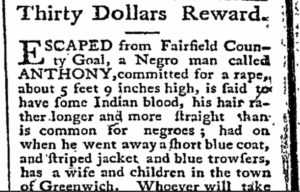
Danbury Hangings: The Executions of Anthony and Amos
The executions of Anthony and Amos Adams in Danbury speak to the fears and racial tensions prevalent in early American culture.
Read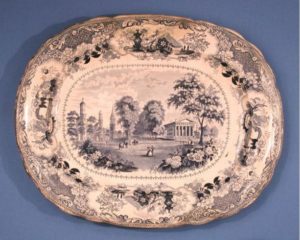
Setting the Table in Historic Style: Connecticut Views on Staffordshire China
Engravings of Hartford, Daniel Wadsworth’s estate, the New Haven Green, and other sites around the state adorned British chinaware made for the US market.
Read
Boston Post Road Carved out Three Travel Routes through State
The forerunners of Connecticut’s three interstate highways began as rugged postal routes in the 1600s.
Read
The First University of Connecticut Trustees
When the University of Connecticut started life as the Storrs Agricultural School in 1881, Governor Hobart Bigelow appointed its first eight trustees—all with agricultural backgrounds.
Read
Emile Gauvreau and the Era of Tabloid Journalism
Emile Gauvreau, former managing editor of the Hartford Courant, became a pioneer in the rise of tabloid journalism.
Read
Give Thanks for American Cooking
Widely accepted as the first cookbook written by an American, Amelia Simmons’s American Cookery was published by Hudson & Goodwin of Hartford in 1796.
Read
Daniel Curtiss: The Life of a 19th-Century Self-Made Man
Daniel Curtiss spent most of his life in Woodbury, thriving in business, pioneering the sale and distribution of commercial goods, and serving his town by holding political office.
Read
Connecticut’s Oldest Fire Department
The Wethersfield Volunteer Fire Department is the oldest continually operated fire department in Connecticut.
Read
New London’s Indian Mariners
In an era of dispossession and diminishing autonomy on land, Native American mariners learned to use Anglo-American structures and institutions to establish a degree of power and personal freedom for themselves.
Read
The Land of Nod Farm, East Canaan, Connecticut
The Land of Nod farm was an important agricultural and residential resource for both the people of East Canaan and the workers at the Beckley furnace.
Read
Seymour was Chusetown – Who Knew?
The town of Seymour was originally named Chuseville, before taking the name Humphreysville (after David Humphreys). It incorporated as Seymour in 1850.
Read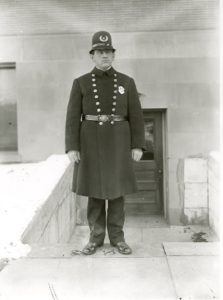

Foot Ball Match: Harvard vs. Yale – Today in History: November 13
On November 13, 1875, Yale and Harvard wore the first team uniforms in an American intercollegiate football game.
Read
A True Dog of War: Sergeant Stubby
The stray dog “Stubby” quickly became the mascot of the 102nd Infantry during WWI, despite an official ban on pets in the camp.
Read
Alfred Howe Terry Born in Hartford – Today in History: November 10
Alfred Howe Terry’s greatest achievement in the Civil War was his capture of Fort Fisher in January, 1865.
Read
Taking on the State: Griswold v. Connecticut
In the 1960s, Estelle Griswold challenged Connecticut’s restrictive birth control law, making it all the way to the Supreme Court.
Read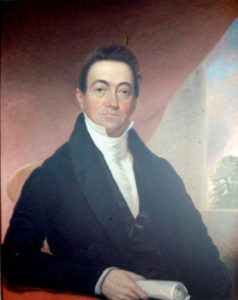
Samuel Foot: A Trader Turned Governor
Samuel Foot was a West India trader from Cheshire, Connecticut, who went on to a successful career in politics in the US Congress.
Read
The Articles of Confederation: America’s First Constitution
The Articles of Confederation loosely served as the nation’s first formal governing document, until ultimately being replaced by the US Constitution.
Read
The “Red Scare” in Connecticut
The Palmer Raids, launched in Connecticut in 1919, were part of the “Red Scare” paranoia that resulted in numerous civil rights violations committed by law enforcement officials.
Read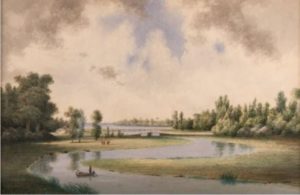
Drawing (on) the Connecticut Landscape: Benjamin Hutchins Coe Teaches Americans the Democratic Art
Benjamin Hutchins Coe helped teach Americans how to draw through the publication of numerous art manuals, many focused on Connecticut-inspired landscapes.
Read
Amy Johnson: A Mohegan Woman Who Survived Colonialism
Amy Johnson was a Mohegan woman who resisted living the life European settlers wanted her to live.
Read
New Haven’s Long Wharf
From the 17th through the 19th centuries, the economic prosperity of New Haven significantly depended upon Long Wharf.
Read
How the Wobblies Won Free Speech
Denied the right to free assembly in public spaces, Connecticut workers joined in a larger national movement of civil disobedience.
Read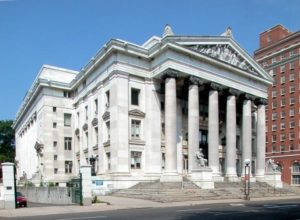
Planned Parenthood League of Connecticut – Today in History: November 1
On November 1, 1961, Estelle Griswold and Dr. C. Lee Buxton opened the Planned Parenthood League of Connecticut in New Haven.
Read
Past Hallowe’en Pranks Bemused Some and Frustrated Others
Jack o’ lanterns, witches, and ghosts—many of the holiday staples that we still associate with Halloween were familiar to Connecticut residents in the early 1900s.
ReadMore Articles




